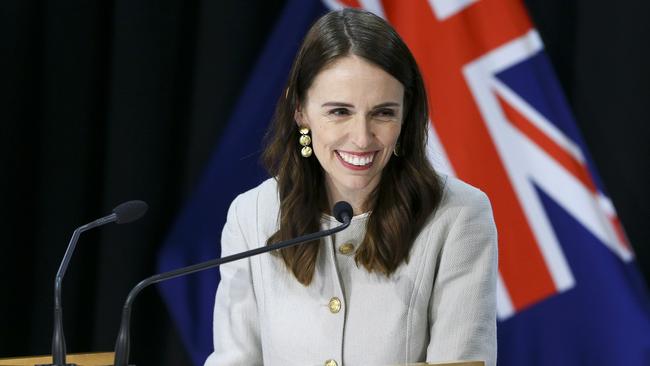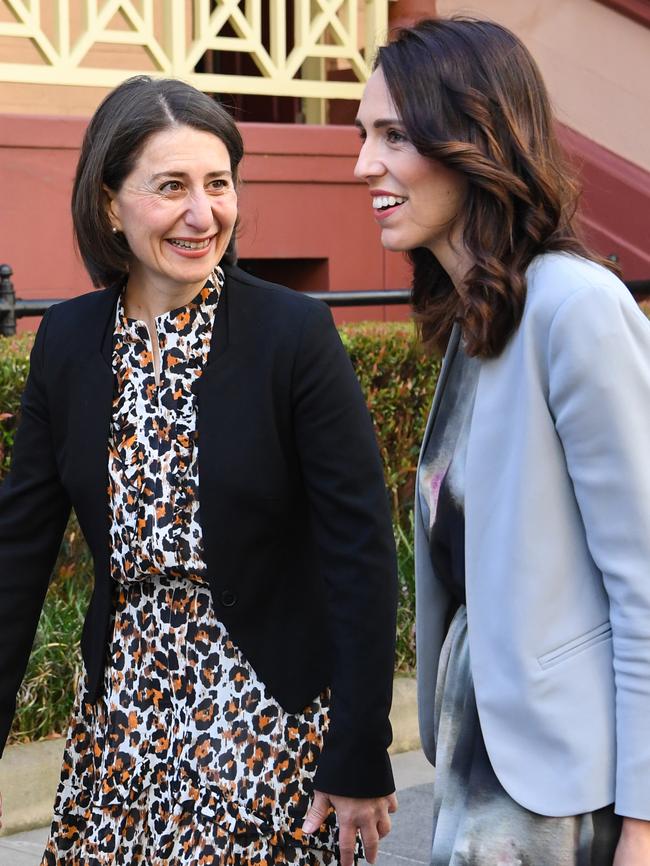Morrison brings Ardern into national cabinet in trans-Tasman solidarity
Australia and New Zealand will mark a historic moment when Scott Morrison welcomes Jacinda Ardern into national cabinet.

Australia and New Zealand will mark a historic moment in their longstanding alliance when Scott Morrison welcomes Jacinda Ardern into the inner-sanctum of national cabinet, in a show of trans-Tasman solidarity not seen for 120 years.
Ms Ardern will take a seat alongside Mr Morrison and the state and territory leaders at Tuesday’s meeting to discuss ways to allow a quick return to travel between the two countries and to kickstart businesses in the region that have been devastated by COVID-19.
Revealing the “unprecedented” invitation to join Australia’s leaders to consider the mooted “trans-Tasman bubble” — which would enable Australians to travel to New Zealand, and vice versa, without having to quarantine for two weeks — Ms Ardern said there were significant advantages for both countries.
“It is about considering ourselves within a bubble where we feel secure that the relative ¬response on both sides of the Tasman gives the assurance that (14-day quarantine) won’t be required,” Ms Ardern said on Monday. “You can see that it is going to take us a bit of time to see we can do that safely.
“The fact we are in a position to have this conversation is a huge advantage to both of us.”
The national cabinet meeting, which Ms Ardern will attend via video-link, is believed to be the first time that a New Zealand prime minister will have attended a cabinet meeting of the Australian government.
At the time of Federation, the 1901 Constitution included provisions to allow New Zealand to join Australia as its seventh state, even after the New Zealand government had decided against such a move.
Industry and Science Minister Karen Andrews said New Zealand had different experiences and used different measures during the COVID-19 crisis. “I think it’s a very good opportunity for Australia and New Zealand to show how closely they have worked together and to make sure that we build on those relationships for the future,” she said.
Ms Ardern has been widely lauded over the past six weeks for clamping down on the spread of COVID-19 in New Zealand, but as the country has started to emerge from the crisis in recent days she has faced criticism for the severity of the economic measures her government imposed.

With a New Zealand election set for September, Ms Ardern has plenty to gain from securing a beneficial travel deal with Australia. Her government is preparing a national budget, to be delivered next week, against a backdrop of soaring unemployment and collapsing business activity.
Ms Ardern said New Zealand would have the most to gain economically from the move to restart travel with Australia, something that could still be months, rather than weeks, away.
There has been speculation that the “bubble” could be extended to Pacific island nations if safeguards can be ensured to stop the COVID-19 virus spreading to areas so far left untouched.
Senior Morrison government sources said expanding the “travel bubble” to Pacific island nations had not been discussed and it was likely all state border restrictions would need to be lifted before Australians could travel to New Zealand, and vice versa. It would be up to the states to decide when to open their borders, with premiers such as Western Australia’s Mark McGowan in no mood to rush.
New Zealand’s cabinet has not formally considered the trans-Tasman travel bubble plan and will decide next week whether to relax the country from alert level three to level two — a system similar to Australia’s shutdown stages during the coronavirus pandemic.
Anecdotal evidence from companies that operate both in Australia and New Zealand is that conditions are much worse on the other side of the Tasman.

Level four restrictions in New Zealand, which were lifted last week, effectively closed all businesses except supermarkets. The existing level three lockdown is tougher than measures taken by Australia, which have been equally successful.
Ms Ardern will outline what level two restrictions will involve on Thursday. They could be introduced as early as next Wednesday.
Opposition Leader Simon Bridges has been a vocal opponent of the harsh measures employed by Ms Ardern. He supports a quick move to restore closer ties with Australia but says reopening New Zealand must be the priority.
Ms Ardern said lifting travel restrictions between the two countries was unlikely to be “in the very, very near short term”.
“From conversations to date, we have a very clear understanding of the timeline that both countries will want to run to,” she said.
New Zealand Chamber of Commerce chief executive Michael Barnett said quickly establishing links with Australia was essential for the New Zealand economy. “Australia is where we have got a major part of our tourism business from in the past,” he said. “It was New Zealand’s first free-trade agreement and most major companies in New Zealand have links with Australia.”
The Australia and New Zealand Closer Economic Relations trade deal is recognised as “the world’s most comprehensive, effective and mutually compatible free-trade agreement”.
The trans-Tasman economic relationship is worth ¬approximately $22.6bn a year.
Australia is New Zealand’s largest trading partner overall. New Zealand goods exported to Australia in 2016 were worth $NZ8.3bn, 17.1 per cent of total exports. Services exports in 2016 were worth $NZ4.6bn, representing 31 per cent of total services exports. New Zealand is Australia’s fourth-largest destination for goods exports and its largest for services exports. New Zealand is Australia’s largest market for manufactured products.







To join the conversation, please log in. Don't have an account? Register
Join the conversation, you are commenting as Logout